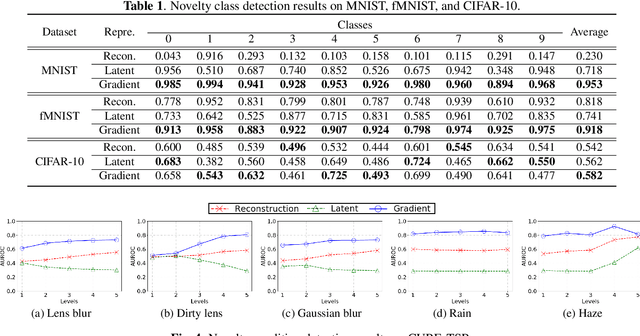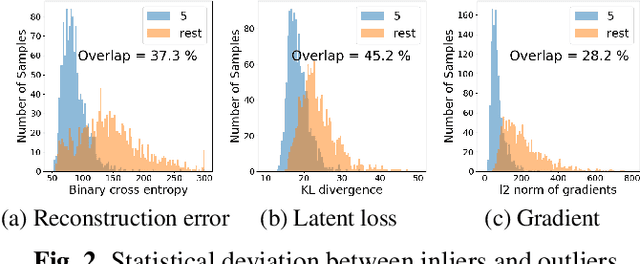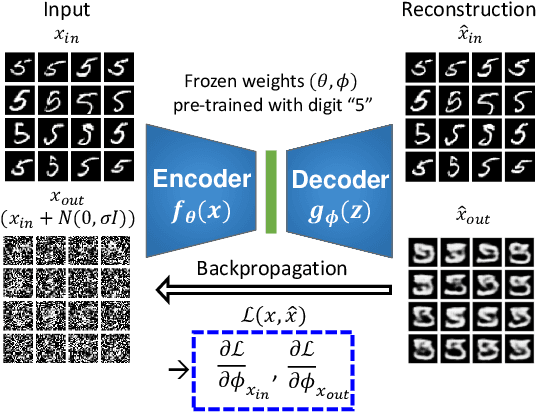Novelty Detection Through Model-Based Characterization of Neural Networks
Paper and Code
Aug 13, 2020



In this paper, we propose a model-based characterization of neural networks to detect novel input types and conditions. Novelty detection is crucial to identify abnormal inputs that can significantly degrade the performance of machine learning algorithms. Majority of existing studies have focused on activation-based representations to detect abnormal inputs, which limits the characterization of abnormality from a data perspective. However, a model perspective can also be informative in terms of the novelties and abnormalities. To articulate the significance of the model perspective in novelty detection, we utilize backpropagated gradients. We conduct a comprehensive analysis to compare the representation capability of gradients with that of activation and show that the gradients outperform the activation in novel class and condition detection. We validate our approach using four image recognition datasets including MNIST, Fashion-MNIST, CIFAR-10, and CURE-TSR. We achieve a significant improvement on all four datasets with an average AUROC of 0.953, 0.918, 0.582, and 0.746, respectively.
 Add to Chrome
Add to Chrome Add to Firefox
Add to Firefox Add to Edge
Add to Edge